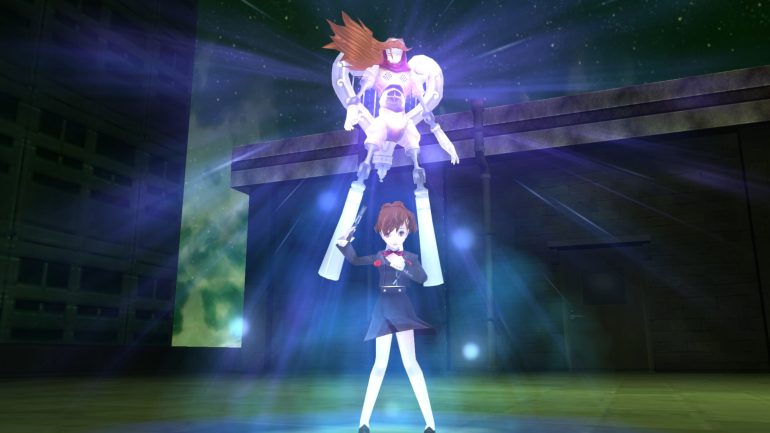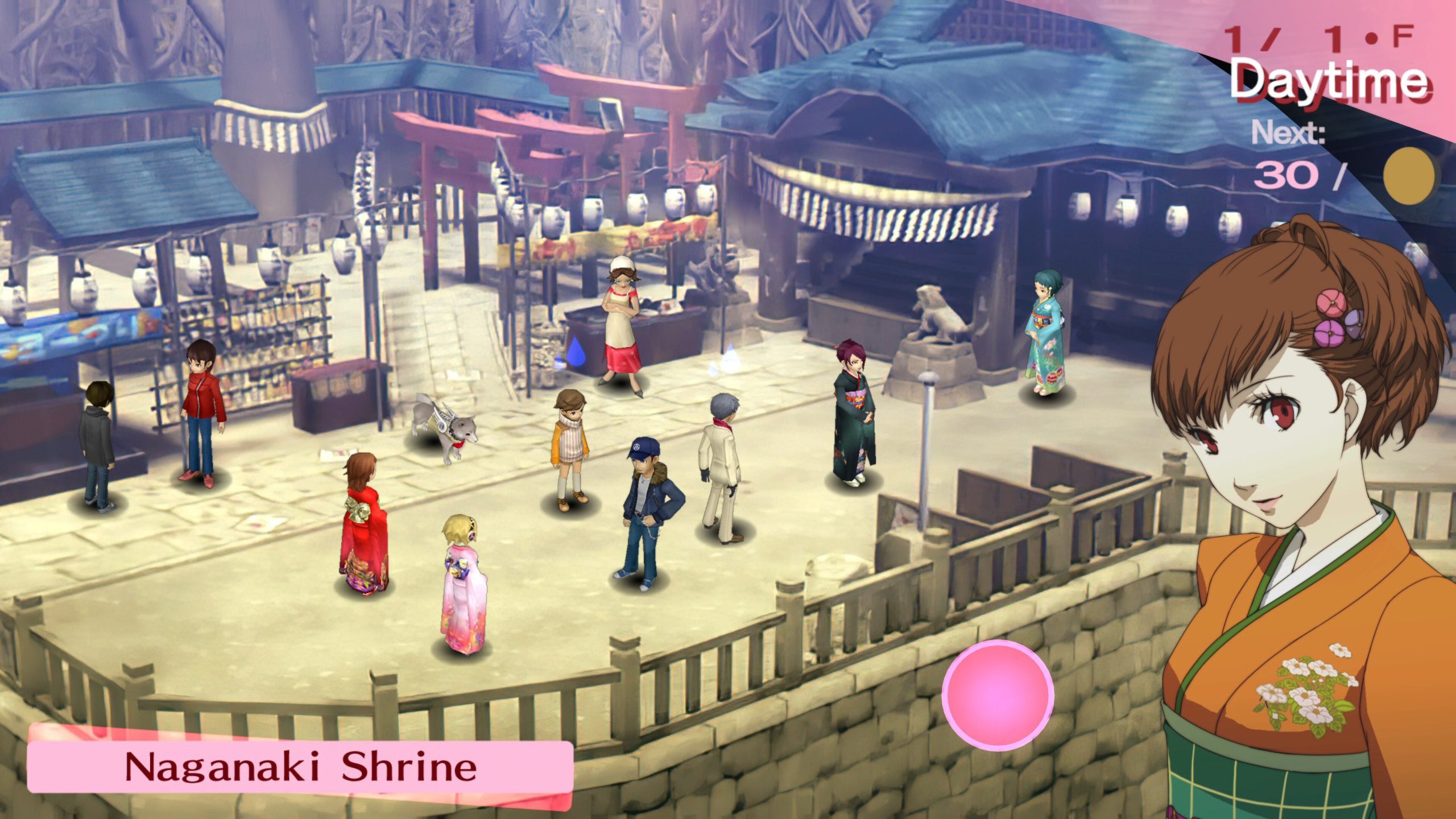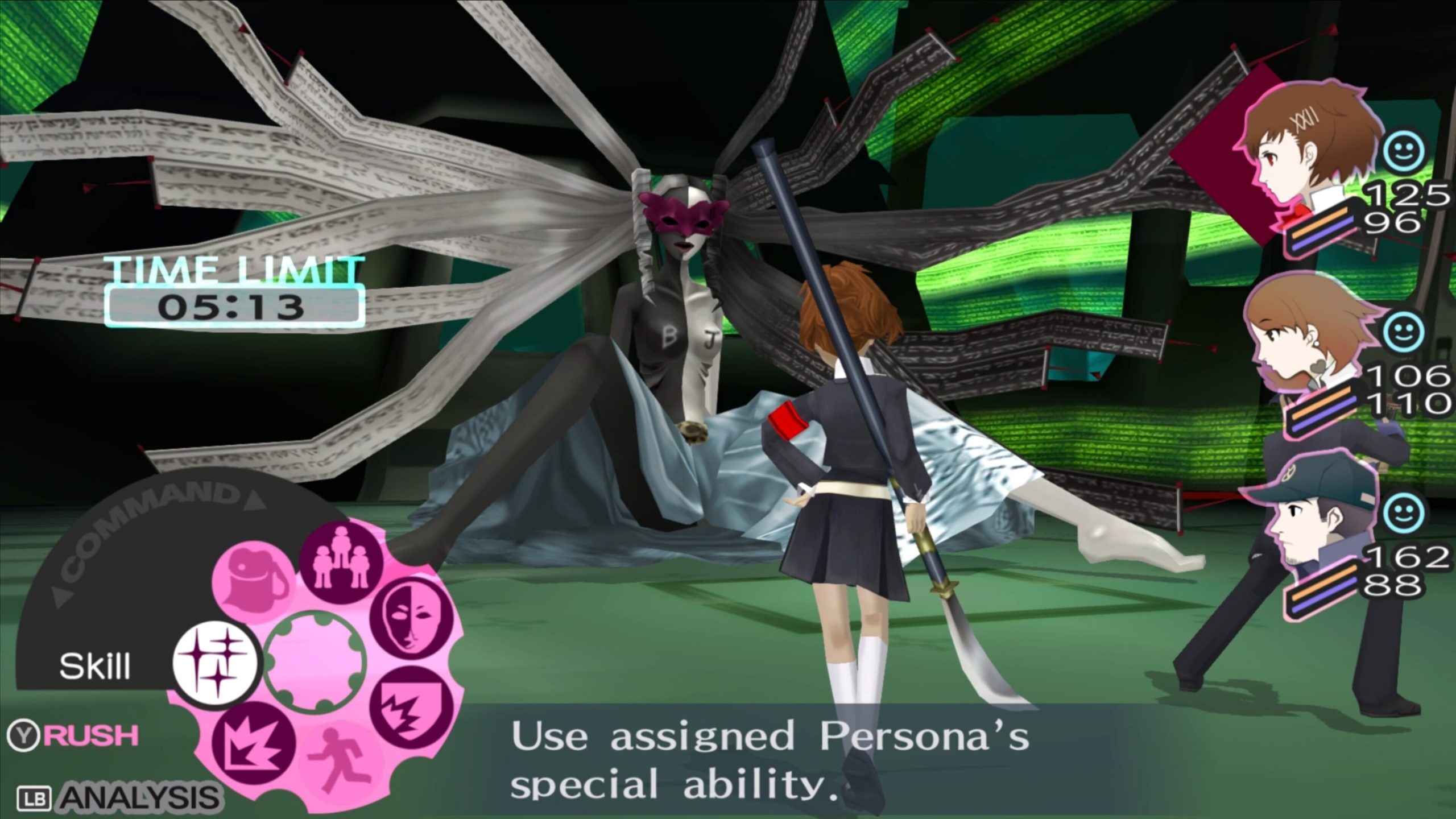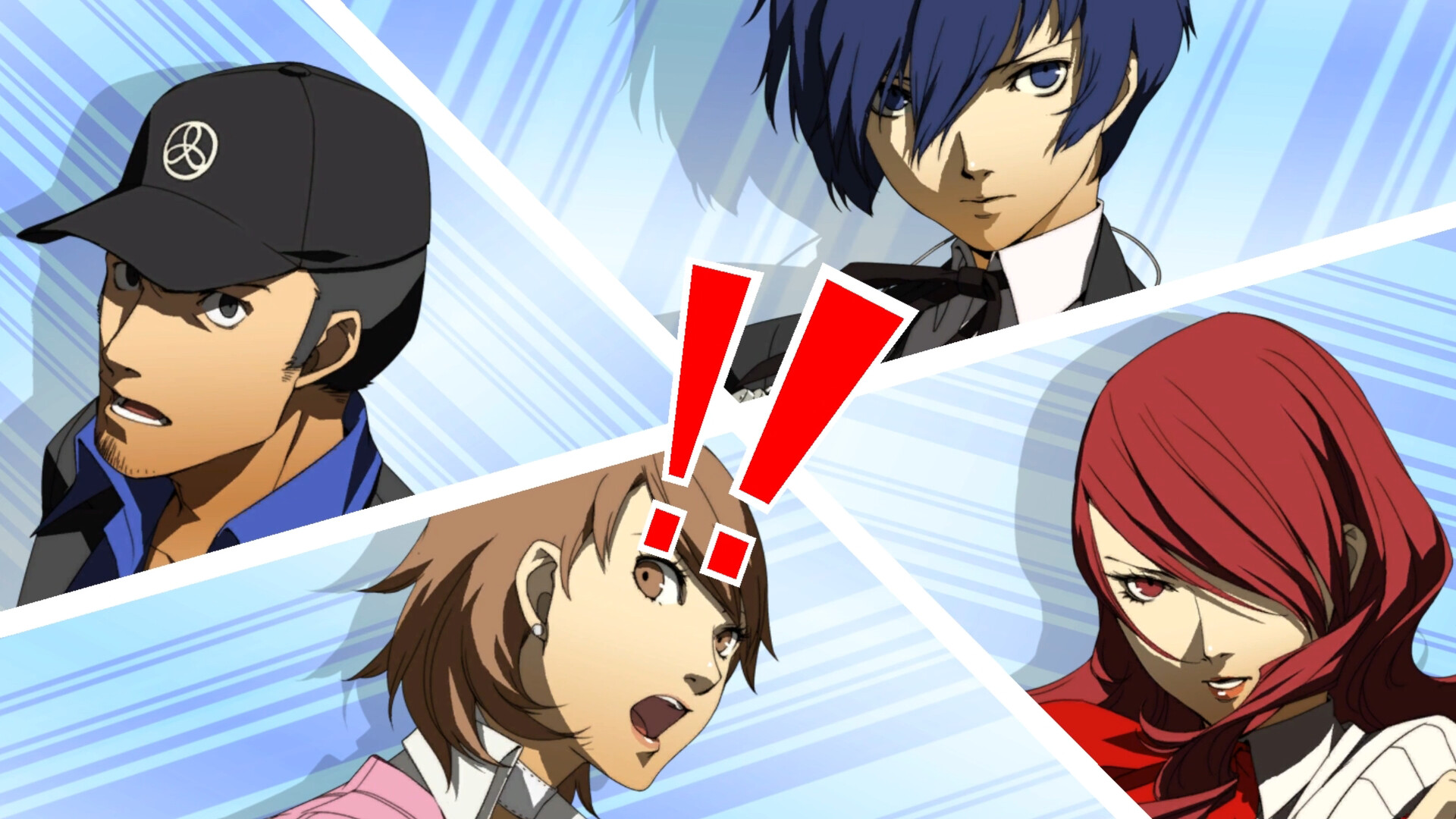When I was in middle school, my best friend vanished.
He was supposed to come over that afternoon to play a (different) video game – and never showed. I searched for him – up and down the halls, skimming over the heads at lunch – but resigned to give up after about two weeks. That sudden, wrenching interpersonal loss exemplifies the vibe of Persona 3 – which he’d introduced me to. It was one of the last games he talked to me about before I never saw him again.
Persona 3 is a 2006 Role-Playing game created by Japanese Developer Atlus, released a year later in North America. It’s one of the best JRPGs of the early aughts – probably because of (wait for it) wrenching interpersonal relationships!
The dichotomy of Persona 3
I’m getting ahead of myself. The basic plot of Persona 3 is this: wake up, go to school, and save the world. You may think that one of those things is more important than the others, right? Wrong. Sure, it may feel silly to have to care about grades when your school turns into a tower that can best be described as the architectural equivalent of the twisted organs of Chuthulu during a hidden hour after midnight when everybody else is sleeping in coffins – but you can’t advance your relationship Kirijo Mitsuru-sempai unless you’re a fucking genius.
To be 100% fair to Atlas, the balancing act of being a “normal” student during the day and fighting through hell with your friends in the Specialized Extracurricular Execution Squad at night isn’t entirely inaccurate to being a high schooler. When I was in high school, living in El Paso during the 2016 election – our shadows were xenophobia, fears of mental illness, fears of school shooters – as if our own shifting reflections weren’t terrifying enough. Similar to the kids in the SEES, I worked tirelessly writing dystopian noir and physiological war fiction that nobody (except for the people who were there) will know (directly) about.
This dichotomy is where Persona 3 really shines and probably where the longevity of its interest resides in simulated (say it with me!) interpersonal relationships! Social Links are a vital mechanic in the Persona Series, working basically as interaction-based community fostering, encouraged by its strengthening of Personas, which you use to assist you in turn-based combat. It also functions as a fun avenue for future tragedy by letting you get to know the characters, which is the series draw for most people! What I’d heard through the Fandom-vine was mostly about the characters, which makes sense considering the combat is… fine.
Okay, it’s not. But – to be fair, this isn’t a 100% unbiased statement. After about 40 hours in, ya pal (and their bad wrists) got a little tired of the same grind. Especially when a lower checkpoint necessitated fighting my way back up to access a set of floors for one specific missing person and to be sent back down again. I really missed just hitting them with the Cat Bus and continuing on through the underground cable entrails of Tokyo’s collective consciousness.
Despite being in the same series, Persona 5 feels dissimilar to Persona 3. Something raw pokes out from under its skin, contrasting sharply with the slick complacency of Persona 5. The best way to describe it would be watching “edgy” psychological anime deconstructions in the dark on a small phone just to feel something™️, after your best friend disappeared and occasionally dropping it on your nose.
The finality of death
There is a special kind of futility that comes with being young and powerless – and even the most resilient and cocky of the protagonists (I mean Jumpei) gets it beaten out of them in the later game with the one-two punch of Aragaki Shinjiro’s death imminently followed by the Chidori Yoshino’s. Technically.
The finality of Chidori’s death varies from version to version. I’ll spare you the canon-vs-not-insider-baseball, but the version of Persona 3 available on Nintendo Switch isn’t its original form, but a later re-release (Persona 3 Portable). For the sake of this article, two critical distinctions separate the Portable from the original release: the first is that you can play as a female presenting protagonist, and the second is that if you know how to, you can save Chidori’s life.
As you can assume, based on the amount of time I’ve whined about it, I didn’t know. There are no clear indicators of this possibility, which, If I had to guess, was because it wasn’t in the original game. You’d only know if you had a guide – or if you, as I did, found out on TV Tropes while I was looking for something else. Chidori isn’t my favorite character or anything. Still, her death was preventable – especially after seeing how wrecked the team was after Shinjiro’s made me feel as if I had failed the fictional children I was supposed to be taking care of. I had to set the game aside.
It felt odd to try to continue forging Social Links after that. I’m not even sure the game wants you to since the indicators to do so stopped popping up after that. I’d fumbled Shinjiro’s before his death, thinking I had more time than I did. We hear that story in real life all of the time. Gone too soon, too young. We both hate and eat that story out of Newscaster’s hands every time. Like real life, I’d spent so much time working to afford better gear and make sure my teammates were well-protected and studying so that I could try to connect with other characters that I missed my chance. There was an expressed feeling that I had played the game “wrong,” a feeling I knew all too well. Looking at the wan-faced teens of the SEES made me long for the times before all of that – when Jumpei had surprised me with his knowledge of coffee beans, and Yukari and I had gone shopping.
I’d never longed for the past like that in real life, always too focused on advancing.
It’s also super important to shout out to the Voice Actors involved here. Akihiko Sanada’s voice actor, Liam O’Brien, almost had my eyes sweating a bit when he was crying at Shinjiro’s haphazard and lackluster memorial ceremony. This is another time I think my age recontextualized a scene for the worse.
I was watching a kid emotionally cut and bleed deeply in real time. Even though mine had mostly scabbed over, I was absolutely furious that any child would have to endure such pain. Where were the elders to protect them?! Well, in coffins, mostly. Or dead. Or manipulating them to try to bring about Armageddon. Again, not necessarily an inaccurate representation of High School life.
After that event, Akihiko’s Persona evolves. I didn’t know they could do that. I think it’s the catharsis that causes this new resolution, a strengthened resolve to continue living – despite the pain, because he understands that he must persevere for the sake of others. Despite my unfinished Social Links, other characters’ Personas also began to evolve. Ken Amada (an actual FUCKING 10-YEAR-OLD) has his own catharsis on the same night, followed by Fukka Yamagishi’s prompted by her friend moving schools and deciding to protect people she’d formed connections with, to the best of her abilities.
Literal character evolution
Although that seems more grounded than Persona-based murder trauma, the major trend of deciding to push onward and continue living for the sake of others is consistent, once again driving home the importance of community. I see the Persona’s evolutions as a sort of emotional deadlift – still heavy, of course, but by claiming their resolve, these kids have pushed their burdens into the air and held it there.
Like the Persona Evolutions, there are a few story-dictated Social Links progressions. One with your cohorts in the SEES as a whole group, and the other a soft-spoken ghost (?) who comes to wistfully and vaguely warn you about impending doom – Pharos. Pharos is there from the beginning of the game, and then he isn’t. The next day a handsome, “flirty” transfer student named Ryoji Mochizuki materializes at your school. Ryoji Mochizuki’s Social Link is only available if you play as a female protagonist. Their connection is obvious – but the exact details are inconspicuous enough for some mystery, even as someone who knew this was coming.
I knew two things about Ryoji Mochizuki, even before he actually appeared in-game. The first is that he, much like my disappeared friend, will appear suddenly (with further context aligning with the real-life context of not wanting anything to do with anybody else). The second is that he, like my disappeared friend, will be suddenly snatched away. Not dead – but snatched.
While I didn’t realize the further parallels until drafting this story, Ryoji’s leaving has a lot more shenanigans going on than just dying. My Mom insisted that my friend’s disappearance had something to do with racism, as we had met his Mother (who’d never seen me) the day before I never saw him again. It’s more than likely, but it seemed inconsequential to emotionally drowning. You see, Ryoji’s a sort of key for the world-ending event the SEES is trying to prevent. For his part, he doesn’t seem particularly jazzed about his reintegration with the main antagonist/final box Nyx, although he has very little choice in the matter.
The final layer to this tragedy cake (or Tartarus, if you’d like) is that Ryoji isn’t just the key to this week’s fictional apocalypse, but additionally the reincarnation spirit of Death, our dearest friend, Pharos. Pharos says that he has always been with us, considering the Protagonists’ parents die in an accident 10 years before the story starts (1999, if I math-ed right). I interpreted it to mean that Death had always followed them, the same way my sadness had always lingered, even before my friend went missing.
Only after playing more video games than I had in the last decade, I realized that I might be trying to exorcise my own Pharos. Until recently, I’d never considered grief for the undead as a part of my healing process. Sure, Shinjiro’s death is fictional, but I was affected by Akihiko’s wailing all the same. Video game strengths, am I right?
I’ll never know what my disappeared friend thought of me. But, I’ll also never truly know the depths of what my High School friends thought either, only that we combined our power to push through and continue living. This story initially began somberly, but I decided I didn’t want that. So I’m gonna pull a Persona 3 Portable instead and resurrect it into something slightly more optimistic so that maybe my Persona evolves.





